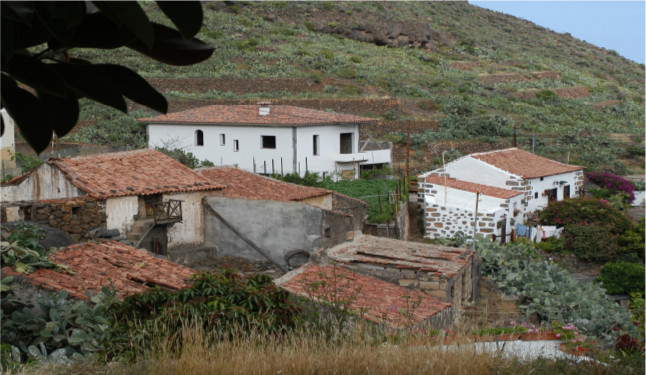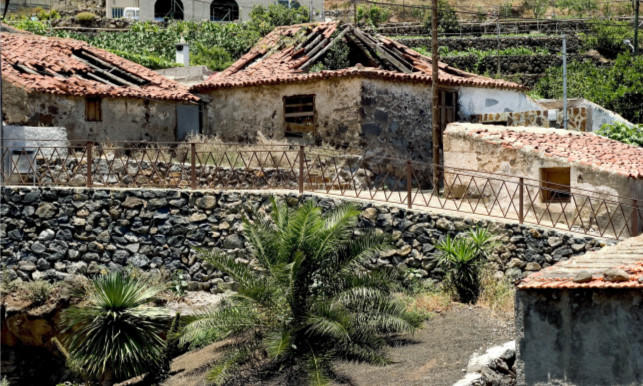Square Plaza Dimas Coello: Located in the center of Igueste, the winepress stands out. It was originally located in ‘Casa de La Mesa’ and in 1980 it was moved to this place by an initiative of the villagers. Two local trails start here: ‘SL-TF 296.2 Barranco de Chacorche’ and ‘SL-TF 296 La Mesa’. The latter leads to ‘Casa de la Mesa’, a 19th-century building that was communally used by peasants who tilled the land.
Cave ‘Cueva de Añaco’: Large cave in the ravine ‘Barranco de Afirama’ next to the path ‘Camino Viejo de Candelaria’. Guanche remains have been found here and bear witness to their past presence. It is a sacred place for those followers of aboriginal culture and even weddings have been celebrated following the Guanche ritual. It has been declared as a Site of Cultural Interest under the category of Historic Site.
Igueste’s dragon tree: A specimen of the regional dragon tree (Dracaena draco), endemic to Madeira, Canary Islands, and Cape Verde. It is included in Tenerife’s catalogue of monumental trees, groves, and flora. It is municipally protected.
Iglesia de la Santísima Trinidad (Holy Trinity Church): The construction of the parish church began in 1783. In 1788 it was blessed and dedicated to the Holy Trinity. It also houses images of St. John the Baptist and the Immaculate Conception, both honoured on their respective annual festivities.
La Jiménez: Typical regional farmhouse with traditional architecture. It is located in Igueste, next to the path ‘Camino Viejo de Candelaria’. These buildings are a clear example of territorial adaptation; they are built on a hillside thus leaving fertile slopes for cultivation purposes. The farmhouse has been declared as a Site of Cultural Interest under the category of Historic Site.
Vera de los Riscos: Also known as Vera de Igueste, it is an interesting landscape lookout to enjoy a privileged view of the Igueste Valley, its center, and the hamlet of La Jiménez.
Hamlet ‘Caserío the Pasacola’: First human settlement in Candelaria’s midlands. Established in a strategic location that served as a watchtower, with fertile lands and natural springs nearby. It is divided by the path ‘Camino Viejo’, a crucial cross for people and goods on their way to Candelaria. The remains of the old houses, a threshing floor, corrals, and terraces can still be seen today. The farmhouse has been declared as a Site of Cultural Interest under the category of Historic Site.



